I had treated myself to breakfast at Le Clos de Mutigny hotel and on arrival surveyed what was on offer. I decided I would try to tick off every single food group, which included boiling myself an egg and operating an unnecessarily complicated hand-cranked fresh orange juice squeezer. A retired English couple who had been quite vocal over dinner the previous night – notably on falling standards in French service – were also in the breakfast room. The night before I had spoken only French to the waiter and hoped that I could keep my nationality under wraps over breakfast too.
The lady fussed around the coffee machine, looking for a cup. She looked here, she looked there; she looked high, she looked low. I knew I was going to have to tell her that the cup was on her table. I hesitated. It’s probably unkind, a most unbecoming of a member of the clergy, but I didn’t really want to get embroiled in a conversation with them.
“Za cups are on zur table.” I said, in a French accent that came straight out of ‘Allo ‘Allo.
“Oh, merci,” came the reply. Trying not to smile too obviously, I continued my petit–déjeneur. I would certainly not fool any native speaker into thinking that I was French, but if I could pass myself off as French to a fellow Brit, that was a start.
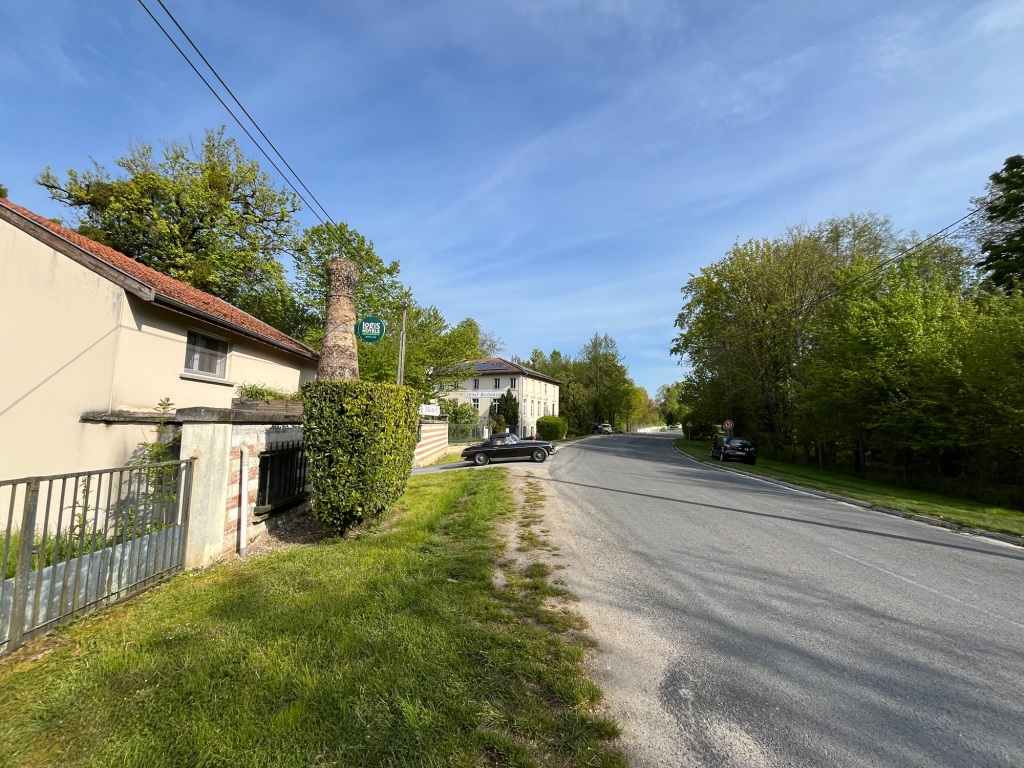
Today’s walk would be reasonably short at around 21km (13 miles) and would take me through the valley of the small river Fion, over open fields and then over a hill into the town of Vitry-le-François. This town, my guidebook informed me, was the largest settlement until Langres, some 250km away.
I had not managed to sneak much away from the breakfast room for lunch. In many places I have been presented with half a baguette and some pastries for breakfast, and have happily taken the half baguette for lunch. However, perhaps wise to such ways, this hotel had provided a basket full of ready cut baguette which was far less practical for food on the hoof purposes.
Finding food en route in rural areas can be quite tricky. In many places there are bread automats, but not all. Farmers produce is sometimes sold in automated machines too, but buying a kilo of apples is not practical when walking.
Finding not boulangerie in La Chausée-sur-Marne, I suspected there wouldn’t be anything until Vitry. This did worry me on the journey. I had an orange and a yoghurt – would that be enough? I did have to remind myself that I’d had pastries, bread, an egg, cheese, a slice of ham as big as my face, yoghurt and a kiwi fruit for breakfast: I would probably be fine!

The villages I did walk through that morning though, were beautiful. Like being on the black and white trail through Herefordshire, Saint Amand-sur-Fion was packed full of half-timbered buildings. the practice here seems to use more slender wooden members, but to use more of them. Many forms farmsteads were clustered in the historic centre of the place.

What I was really looking forward to seeing here, was he church though. St Amand began as a settlement around a spring, dedicated to this seventh Century bishop and missionary to Flanders. The Knights Hospitallers established an outpost here in the 12th Century to protect pilgrims, and this probably explains why, such a small village has such an impressive church.
I had read about it, with its reasonably humble Romanesque nave, and then mini-cathedral like Gothic crossing and apse.

From the outside its jumble of buttresses, opposing roof slopes and jutting walls. Inside it makes a lot more sense. However it is also undergoing a huge renovation. The east end is sectioned off entirely, stained glass removed and whole scale stone repair and replacement ongoing.
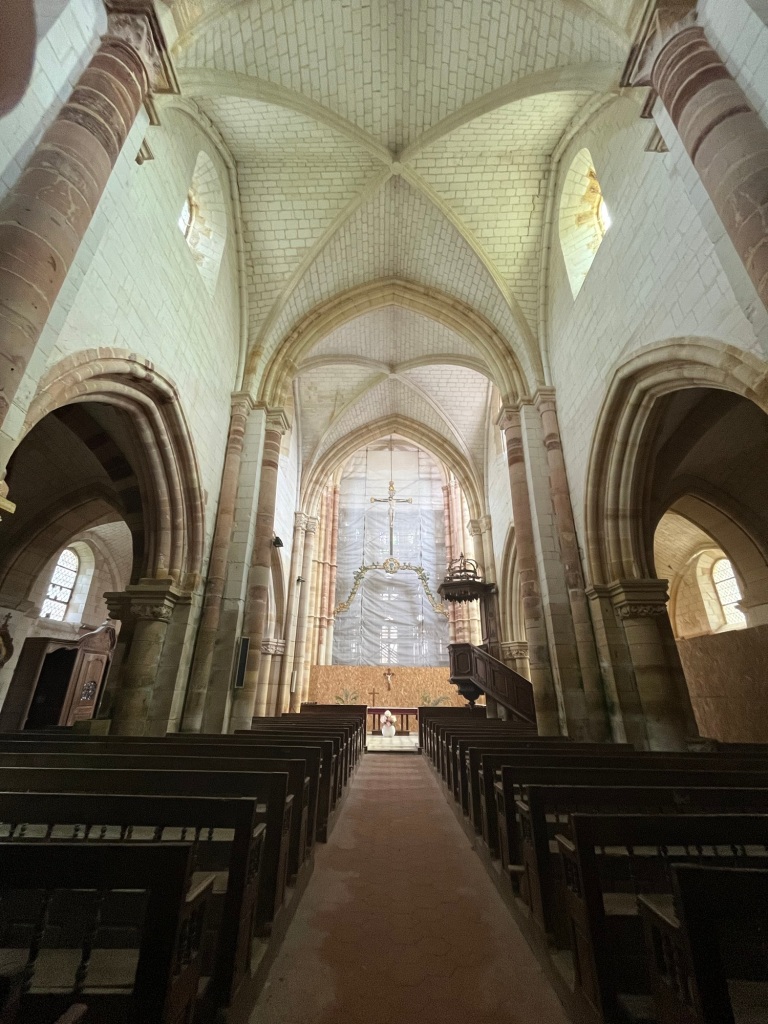

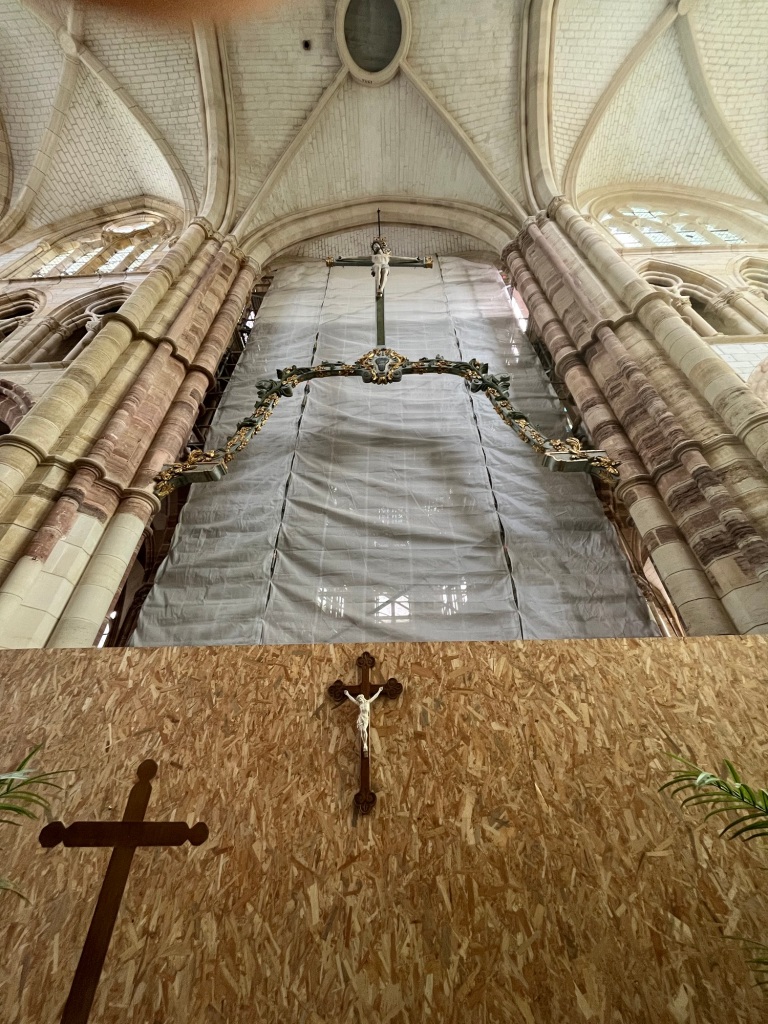
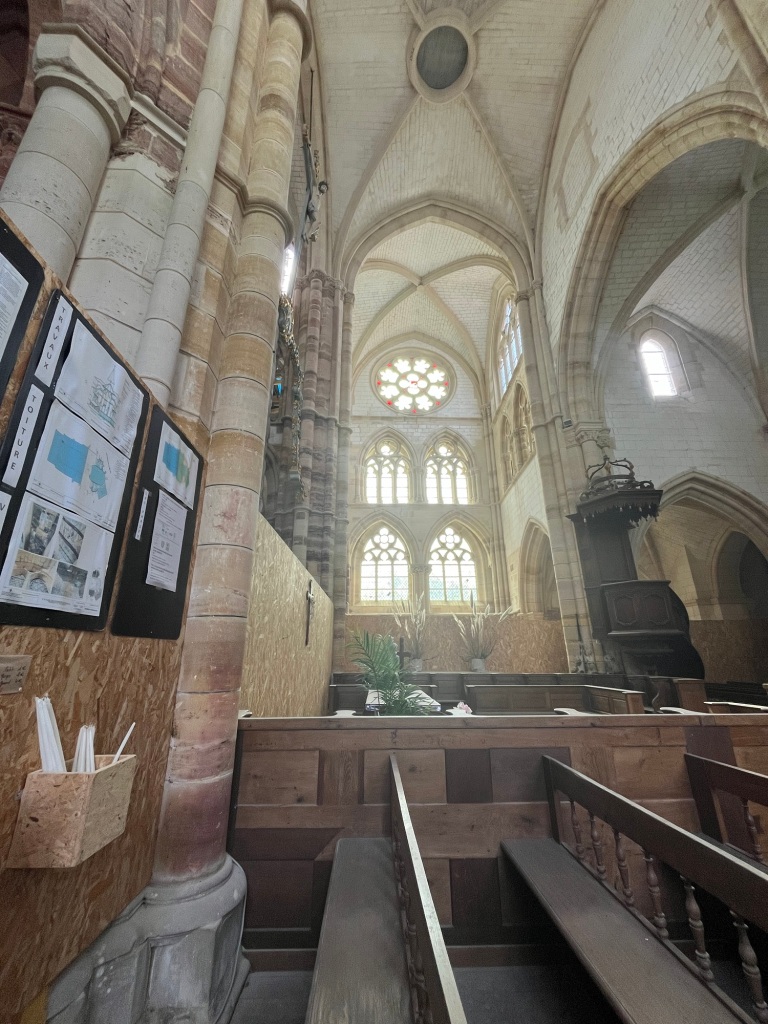

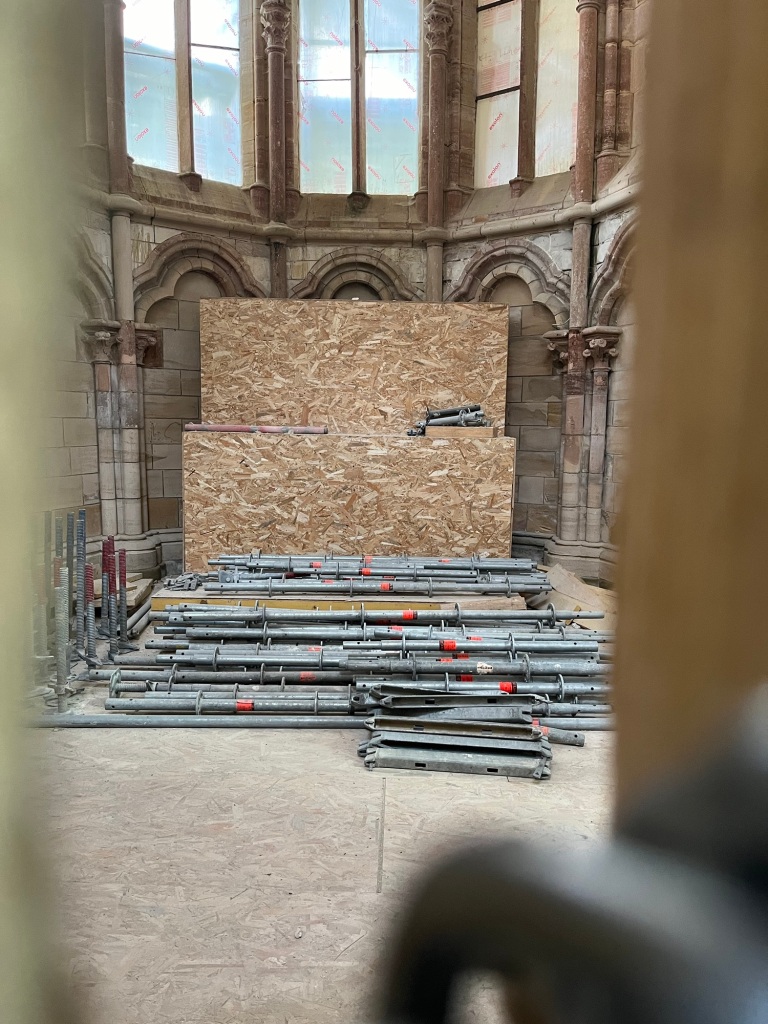




The east end apse looked like this prior to the renovation project.

There is clearly a huge amount of government and church funding going into this project. It is a truly remarkable building, and worthy of saving. Just as the twentieth Century church at Rocquigny Church was too.
However, both churches fell into a parlous state before they were saved. Elsewhere, in St Amand Church it is clear that open joints have allowed water to get into the fabric of the building, with green columns and stonework within the nave and a dank atmosphere.
There have been plenty of other churches I have seen on my travels though which won’t attract such national funding and will become derelict. Sadly it is the same in the United Kingdom too, very many of our churches are looked after by a dwindling number of volunteers with no assistance from central church or government funds. The idea persists that the Church of England is a wealthy institution, and of course it is, but were it to fund all the outstanding repairs on all the church buildings in the country, it would soon run out of money.
I believe that the parish church is under greater threat today than at any other time since the inception of the parish system. In many places it is the oldest public building in a community and of great cultural importance; the repository of a community’s history and customs. Not the history of kings and queens, but the social history of the common woman and man.
Church buildings remain too, a place of quiet encounter, a place to go to at a time of personal crisis and, of course, a place of worship. But many could close within a generation, unless more people (people of faith, people of no faith and all stops in between) take an active interest them. For I strongly suspect that in this troubled and uncertain world, there will be a revival of faith in the Western world, but I think it is likely to follow an Early Church house model of growth, where there is less emphasis on the need for traditional church buildings.
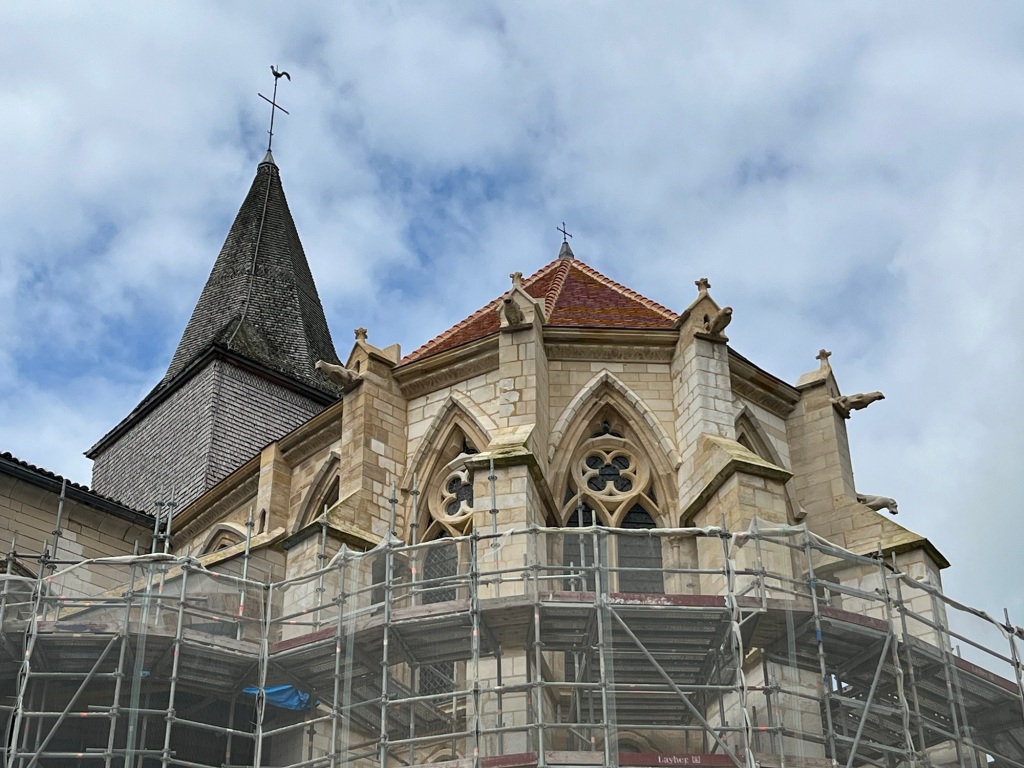
It is wonderful to see the new stonework and roof, gargoyles and tracery emerging from beneath the scaffolding at St Amand-sur-Fion; making good the fabric for another couple of hundred years. This could be the picture at many other churches across this country and in the UK if more people get take these buildings to their heart. I suspect I am largely preaching to the converted here, but do approach your local church to see how you can help, and do look at supporting the National Churches Trust.
St Amand is, among other things, patron saint of brewers, wine-makers, innkeepers and bartenders. During his life he held great store by hospitality: our church buildings could take a big leaf out of his book!

I investigated St Amand’s Well, and found it home to a great many frogs. Though given his patronage, newts may have been more appropriate!
And then onwards. I stopped outside the village to transfer some water from my reserve bottles, into the bottle strapped to the front of my bag.
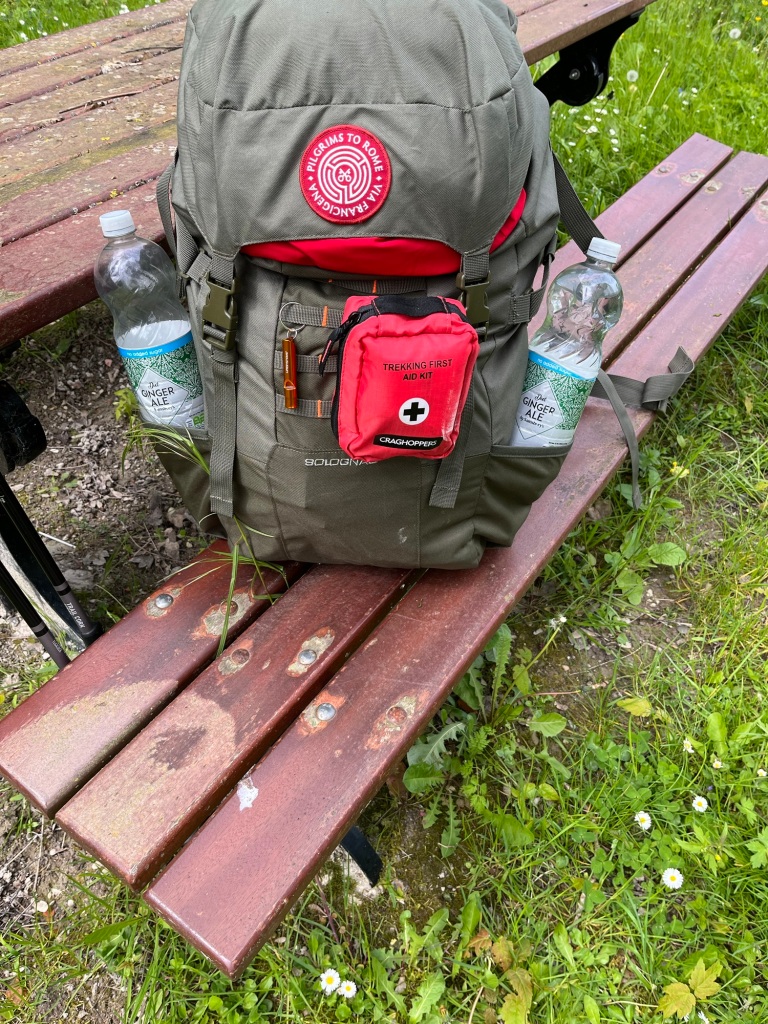
A lot can be read on Via Francigena internet forums about water bottles. Some people favour a CamelBak system; indeed I had intended on using one myself. It’s a sort of plastic pouch with a tube on, the you fill up and place in your bag. Frankly it looks a little medical and I have not met any walkers yet who use one. The one I bought leaked straightaway and, although I suspect had I have spent more money on one it might have been more reliable, I saw little point in trying to keep water out of rucksacks, only to introduce a 2.5litre bag inside the rucksack itself. I also found, that I had no idea how much water I was consuming out training walks. And so I went with a far more reliable solution: Fred and George!
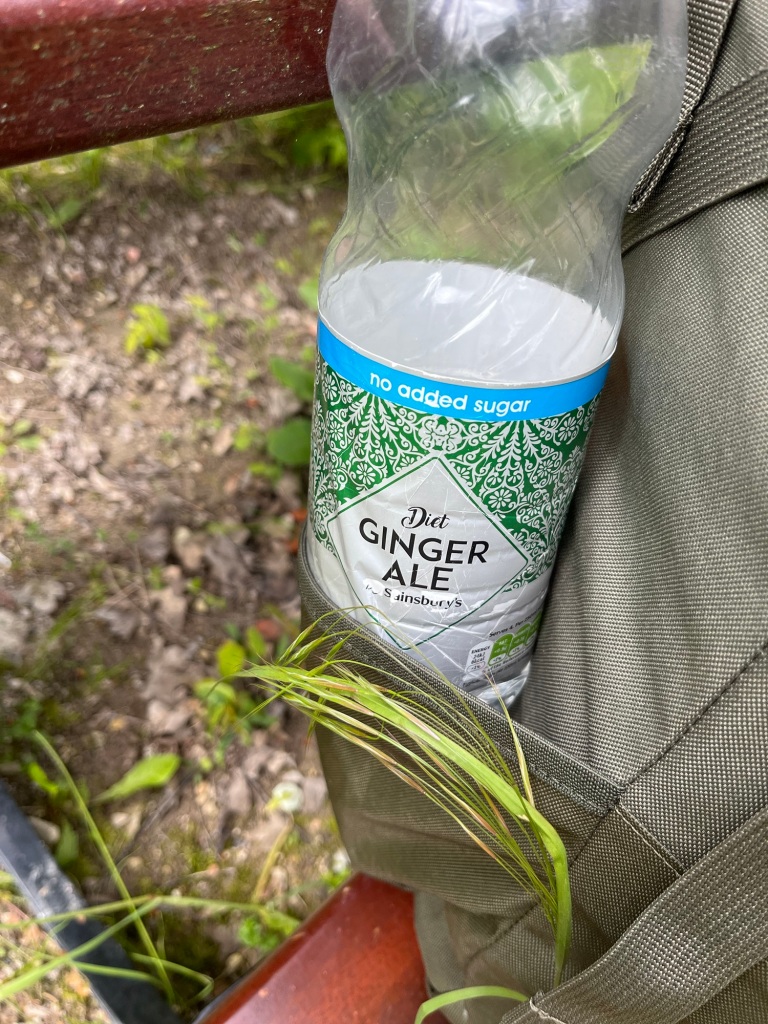
Fred and George are two plastic Sainsbury ginger ale bottles (other brands are available). They take their name from the Fred and George Weasley, the ginger twins from the Harry Potter series. By refilling them, I can carry up to 2 litres of water, plus 500ml of water in the metal bottle that is strapped to the front of my rucksack:

This bottle hasn’t got a name, though I’m clearly tempted to call it Harry given the scar and the Weasley connection! (The scar incidentally came from my tumble in woodland near Ferfay, in the Pas-de-Calais).
Thus I estimate how much water I will need before setting out, and remain hydrated all day!

A good proportion of the remaining walk took me over vast fields, stretching out into the distance. I listened to some radio programmes I had downloads onto my phone, including a hilarious episode of My Teenage Diaries, where comedian and writer John Finnemore shared tales of his unlikely gap year teaching English in Poland.
The path eventually began to climb, towards viewpoint over Vitry-le-François and the surrounding countryside.

The Mont de la Forche sits at a dizzying 203 metres above sea level, but the view attest for the relative low lying nature of the rest of the land around.

The descent through the vineyard was not fun on the knees, but soon the gradient eased off and, as if to underline my thinking at St Amand-sur-Fion about threatened church buildings, I came across the abandoned Chapel of St Genevieve.
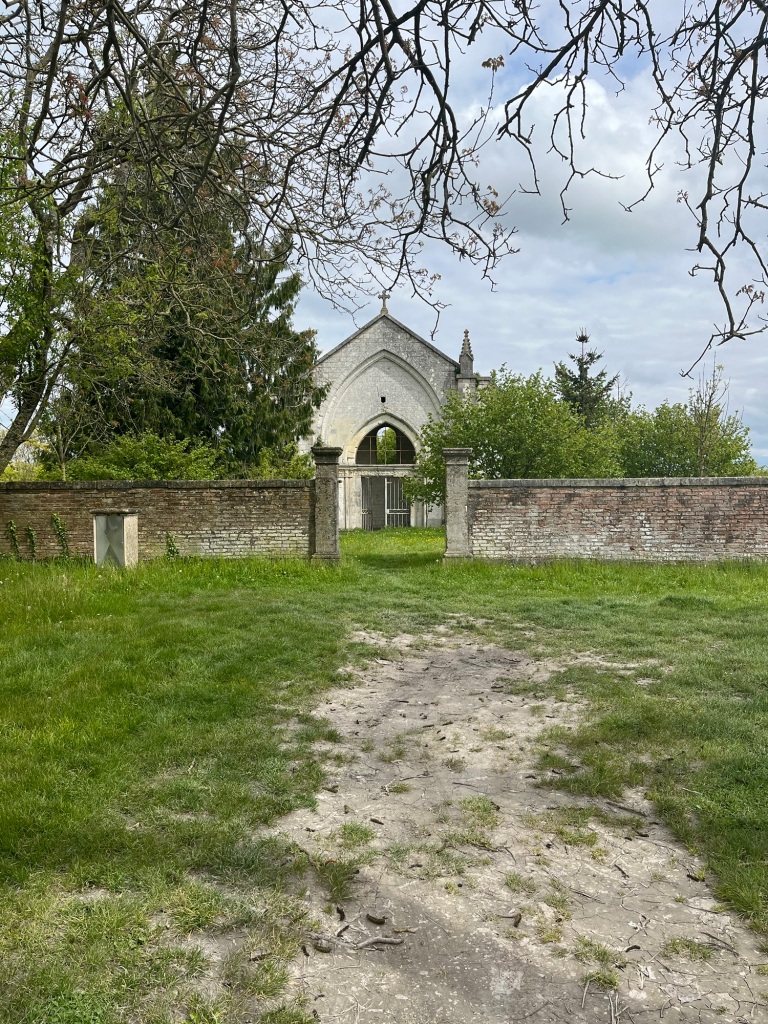


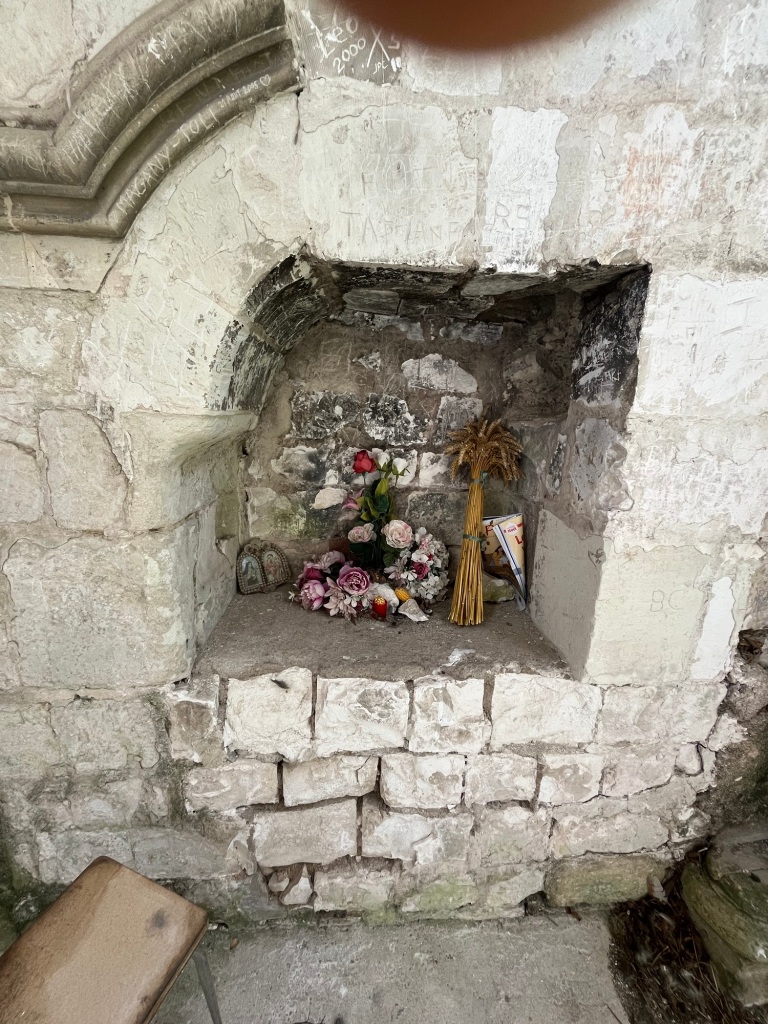
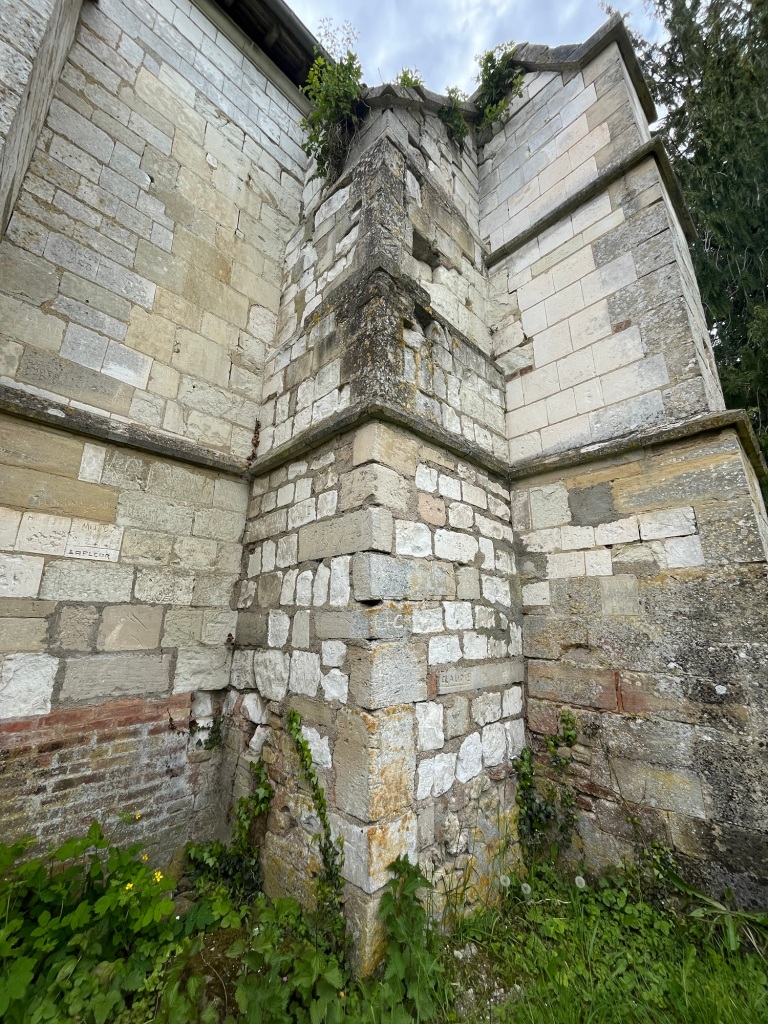

Graffito had begun to be scratched into the soft stone on the outside of the building as early as the 1880s, but the names and dates within the sanctuary itself began in the 1960s. Now this appears to be a private chapel built by a family or organisation, rather than a parish church, but it was still a sobering sight.

And so, vie a rather circuitous route, the path took me down into the outskirts of Vitry. There were a number of private allotment gardens – they would probably be called dachas in Russia. I came across two rather large men with a big pile of hardcore. They had with them two primary aged children and the four of them were bashing up bricks and tiles to spread out to create a parking surface. Given what has recently happened with my son Ben, I would have liked to have seen the kids wearing safety glasses, but decided that my French was not up to it, and my nerve wasn’t either!
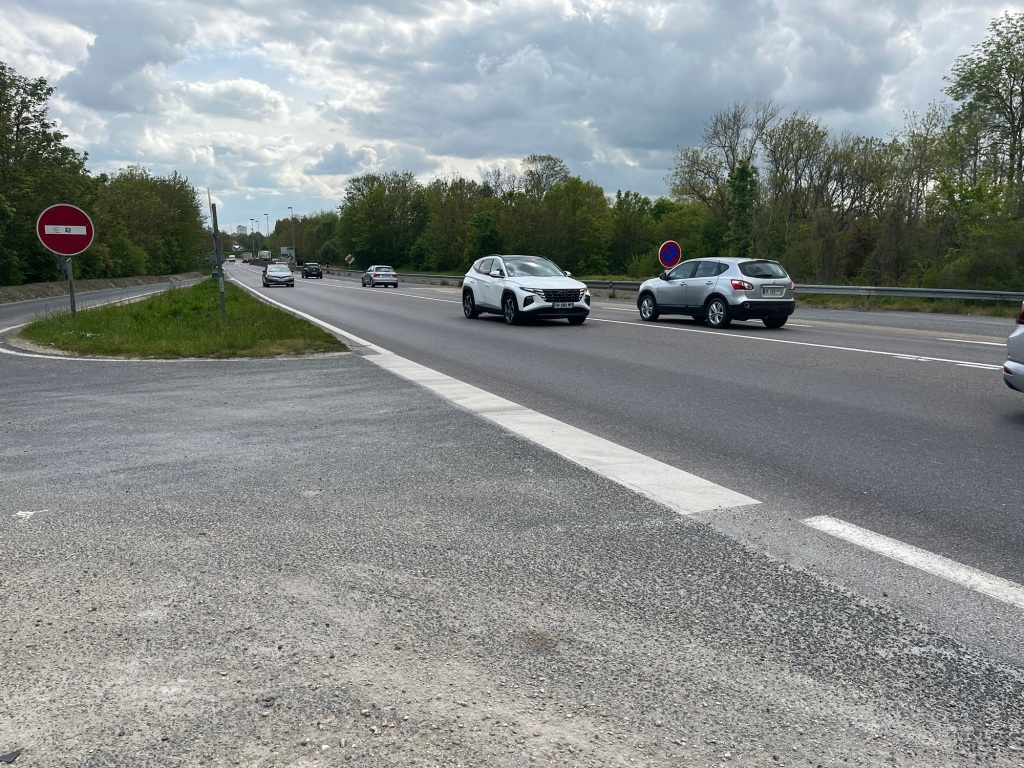
One of the last obstacles into Vitry was crossing the busy N44. I’m not usually faint of heart, but the speed and frequency of the cards was terrifying. I remember once being in a lecture about railway safety when I was a Movements Operator in the Territorial Army. There was a lot of technical jargon’s about widths between rails, but the main crux was to always know where you place of safety was, so you could leap there if necessary. The lane arrangement on this road was a bit odd, with one lane splitting into two. I spent quite sometime working it where my “place of safety” was before finally spotting a gap and making a dash for it. (This was probably the fastest I’ve moved since driving down to Dover the ferry port!)

So, with just a brief flirtation with the canal I had got to know I so well between Condé and Châlons, I was in Vitry. There was another church to visit, but that, I decided, could wait. I wanted some lunch / dinner and my bed.

Leave a comment